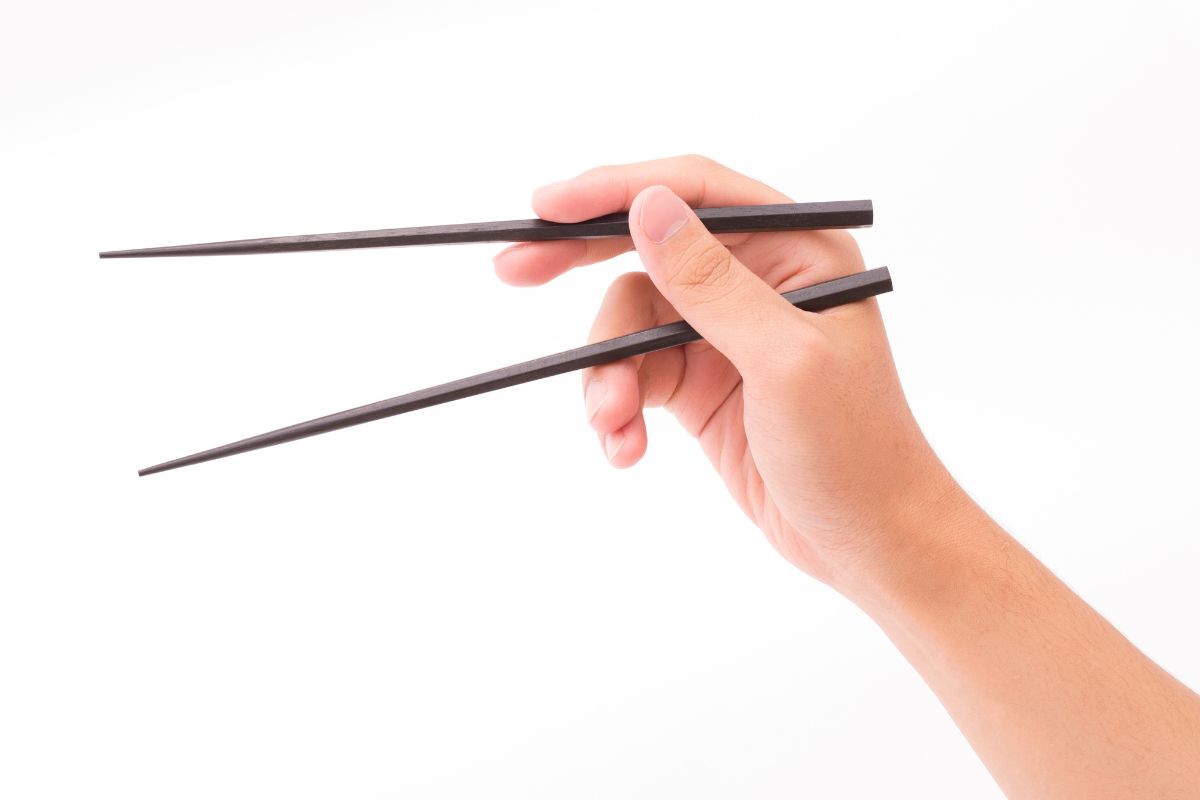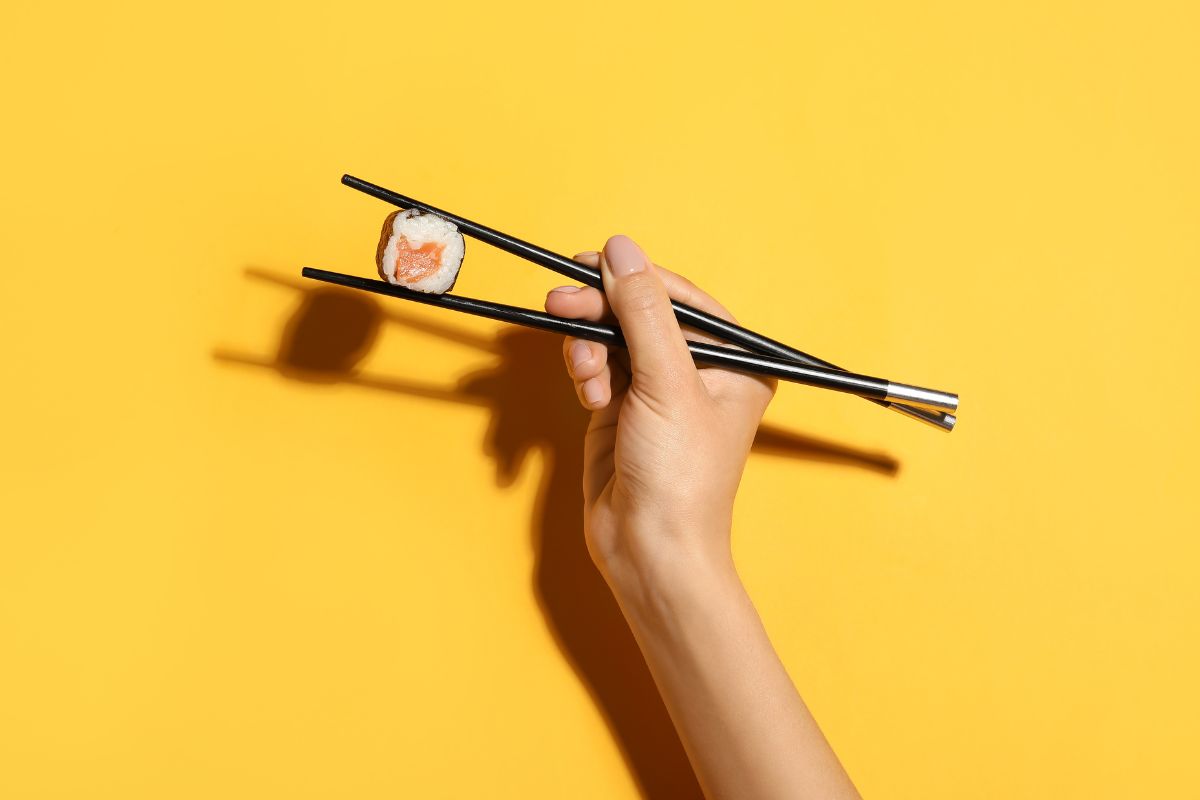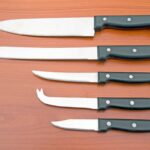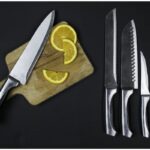Asian restaurants are extremely popular in the U.S. Traditionally, Asian food is eaten with chopsticks. However, in most U.S. Asian restaurants, customers are also provided with knives and forks to help them eat their meals.

Despite the fact that Western cutlery is offered in restaurants, many people want to master the art of using chopsticks to eat.
Getting the hang of using chopsticks can be difficult. However, with a few tips and tricks, you will be able to eat sushi, meat, and vegetables with chopsticks with ease.
In this quick guide, we will give you step-by-step tips on how to hold and move your chopsticks to pick up food.
A Step-By-Step Guide To Holding Chopsticks
Using chopsticks can be really overwhelming for people who have never been shown how they should be held. Although it is possible to stumble your way through and find a way that works for you, there is actually a proper way to hold them.
Follow the steps below to improve your chopstick skills.
Step One: Position The First Chopstick
Begin by placing the first chopstick in your hand. This stick should be held between your forefinger and your thumb. Balance the end of the chopstick on your ring finger.
To make this easier, use the fleshy part of your hand between your thumb and index finger to grip the chopstick. This will be the bottom chopstick.
Step Two: Position The Second Chopstick
Once the first chopstick is comfortably in your hand, it is time to add the second or top chopstick. Place this chopstick between your thumb and forefinger again.
You will need to use the end of your thumb and forefinger to grip the chopstick. The end of the chopstick should rest on your middle finger.
At this point, the top of the chopsticks should be close together and the end should be further apart.
Step Three: Adjust Your Grip
Once both chopsticks are in your hand and you have a comfortable grip on them, it is time to adjust your fingers slightly. Using your thumb, forefinger, and middle finger, gently tighten your grip on the second or top chopstick.
This will bring the ends of the chopsticks closer together.
Steps two and three should give you a better understanding of how the chopsticks are moved in your hands to pick up and grip food.
Step Four: Lift The Top Chopstick
When you are using chopsticks to pick up food, it is important to know that only the top chopstick should move.
The bottom chopstick stays in place to support the food. In order to lift the top chopstick to be able to grip food, you will need to use your index and middle fingers.
This movement can take a little bit of practice to avoid loosening your grip on either chopstick. However, once you master it, it will become easier.
Step Five: Close The Chopsticks
When you want to pick up a piece of food, you will need to close the chopsticks to create pressure.
Just as your index and middle fingers worked to lift the top chopstick to make a gap, they will now work to bring the same chopstick back to its starting position. This will grip the food between the end of the chopsticks.
Step Six: Enjoy Your Food
Once you have gripped a piece of food with the chopsticks you can raise them to your mouth to eat. As we mentioned before, getting the hang of using chopsticks can take some time, but with a bit of practice and patience, you will find it easier and easier.
Helpful Tips For Using Chopsticks
Now that you know the basics of how to hold and move chopsticks, there are a few helpful tips that can help you get the hang of it quicker.
Firstly, you should be aiming for your fingers to grip the chopsticks around one-third of the way down. When people are new to using chopsticks, they often try to hold them as close to the bottom as possible.
This is because they think it gives them more grip. However, all it does is restrict movement.
Secondly, both chopsticks should be supported by the ring and middle finger. This should be a natural support which means you don’t have to grip the sticks too tightly.
When you use your fingers to support the chopsticks, your hand is less tense and you are less likely to apply too much pressure to the food which can cause it to pop out and shoot across the table.
Finally, your chopsticks should fit snugly into your hand. Before you attempt to pick up any food, you should make sure that the chopsticks are securely in your grip and they are comfortable.
If they aren’t, you are likely to overcompensate on the pressure and find it difficult to pick up food.
Chopsticks Etiquette
Once you have mastered the art of eating with chopsticks, you should also consider the practices that are considered polite and rude in different places.

While there are different rules that apply to different places, there are a few general rules you should follow.
Don’t play with them. When you aren’t used to eating with chopsticks, it can be tempting to fiddle and play with your chopsticks while waiting for your food. However, this is considered to be rude and vulgar in many cultures.
Don’t use them with shared food. Many Asian restaurants serve dishes that are meant for sharing. Chopsticks should not be used to take food from a sharing plate. Tongs or other utensils should be used for this. Chopsticks are for food on your own plate only.
Don’t pierce your food with them. When you are struggling to pick up food with chopsticks, it can be tempting to just spear your food instead. However, this is considered to be rude.
Don’t leave them resting vertically in your bowl. When you are not eating, your chopsticks should be rested horizontally across the top of your bowl. Resting them in the bowl at a vertical or horizontal angle resembles incense that is offered to deceased family members.
Final Thoughts
Using chopsticks can take a while to get used to. However, once you know the right technique, all you need is a little bit of practice to perfect this art.
Remember to follow general chopstick etiquette when you are visiting an Asian restaurant.
- How To Reheat A Cheesesteak - November 5, 2023
- What Are Three Must Have Kitchen Knives? - September 22, 2023
- How To Protect Edges Of Pie Crust - June 15, 2023








